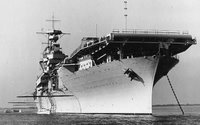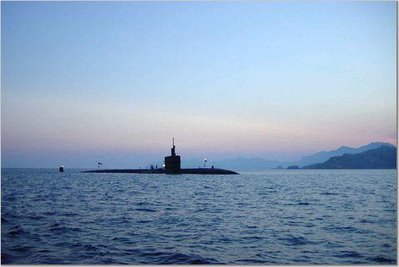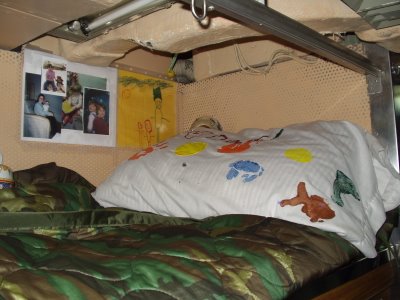Got an e-mail the other day from a guy I went to boot camp (Great Lakes) with many, many years (almost 26!) ago. That got me thinking about boot camp, and about this and that, and I ended up on the subject of coffee. The Navy runs on coffee, of course - consider the stereotypical CPO with his index finger permanently crooked to hold his coffee cup - and I've certainly done my bit through the years to help support the world's coffee growers.
My mother was a tea drinker, and I've been drinking tea ever since I was a kid. I didn't start drinking coffee until around the time I dropped out of high school, and that was out of desperation - it was a cold, snowy, blowy day in northern Illinois, and the restaurant where I stopped to thaw out didn't serve tea and had run out of hot chocolate (or maybe it was the other way round). So I ordered coffee, diluted it thoroughly with cream and sugar, and started a lifetime habit....
I drank it blond & sweet the first couple of years, but then switched to blond & bitter to silence all my health-food-junkie friends who kept making pointed remarks about all the refined sugars I was poisoning myself with. A year or two later I went out to dinner with friends and ordered my usual; the waitress delivered the coffee, but not the cream. After the second reminder, and subsequent failure to deliver, I gave up - the coffee was getting cold and I was getting thirsty - and drank it straight. I've been drinking black & bitter ever since.
Sometime in '75 or '76 I read a magazine article about the dangers of "excessive caffeine" consumption - the stuff buggers up your liver, stomach, blood pressure, &c, &c. All through the article, the author kept saying "excessive caffeine," but he didn't get around to defining this term until the final paragraph: More than two or three cups of coffee (or the equivalent) a day. Now, in those days I was drinking anywhere up to 16 cups a day. To begin with, my cup was never empty at work; when it got down to a quarter-inch or so, I'd top it off. That accounted for 8-10 cups a day, and then I'd go out to dinner and drink several more cups. (This, obviously, was long before I ever had to start worrying about drinking coffee after 1500....
*)
Then I joined the Navy, and for the first time in years was in an environment where I couldn't grab a cup of coffee whenever I felt like it....
Nowadays, I think, they call them Recruit Division Commanders (RDCs), but when I was in boot camp they were Company Commanders (CCs) and every company had two of them. Ours were an IC1 and an EN1
**, and both were coffee drinkers. And whenever one of them needed a refill, he'd grab a handy recruit, hand him a coffee cup, and send him down to fetch it.
Of course, this being boot camp, we couldn't just ask for a cup of coffee. Do that, and you'd be sent back to your CC with his cup full of damp, firmly packed coffee grounds. The procedure was to knock on the office door, take three steps in, come to attention, turn to face the CC who was there (eight companies in the barracks made for 16 CCs to take turns manning the office off the building quarterdeck), and say, "Sir! Seaman Recruit [insert surname here] reporting, Sir! My Company Commander has sent me to get for him a cup of freshly brewed, hot, black, liquid refreshment from the coffee pot, SIR!" This speech, and only this speech, would lead to the desired results.
One day EN1 handed me his cup and told me to get him some coffee. So off I went, cup in hand, to the quarterdeck. I knocked, entered, sounded off, received a cupful of coffee, and walked out of the office, to find another recruit from my company standing there, holding IC1's cup and looking extremely nervous. Seems he couldn't remember the speech, and since I obviously could
***, he wanted me to get the product for him. "No," sez I.
"C'mon, man, I can't remember all that! You know how to do it. Get some for me, please!"
We argued back and forth for a minute or so, and then I saw the door behind him open - and IC1 tiptoed in, holding his finger to his lips for silence. I returned my attention to my fellow recruit, who was still pleading for my assistance and almost jumped out of his skin when IC1 tapped him on the shoulder and said, "Recruit! Where's my coffee??"
Heh, heh....
Hawai`i is a beautiful place, and I'm glad I got to go see it, but I was ready to leave by the end of the second week - three years was much,
much too long to be there. (Odd thing about Hawai`i - everyone I know who's lived there either absolutely loves it, or absolutely hates it. No middle-of-the-road feelings about it at all. But I digress....) One of the things Hawai`i is noted for is the
Kona coffee that's grown on the Big Island. We had a QM2 who would come in to work every morning with a baggie containing enough ground Kona to make one pot. He'd go down to the crew's mess, carefully rinse out the coffee pot and the filter basket, brew his potful of Kona, fill his cup, and walk off, leaving the rest of the pot for those of us who were circling like buzzards.
One of the things I found really strange about the skimmer was that the mess decks were secured between meals. On the boat, of course, the crew's mess also serves as lounge and lecture hall; the coffee pot, milk machine, &c, are always available for use. Not so on the target. Instead, each division maintained a coffee mess (or few) in its divisional spaces, and S2 (the cooks) would issue coffee periodically, each division receiving a set amount based on the number of people in that division. Coffee messes were secured at night (electrical fires not being considered a Good Thing), so the only place one could get a cup of coffee before/after watch in the middle of the night was the Lifer Locker (First Class mess), which of course was only open to E6's; E5 and below were out of luck.
Had an RM2 on
Jax who liked to load up on caffeine. He'd take a large travel mug, pour in two or three packets of cocoa (yes, chocolate contains caffeine, too), add five or six packets (or second's worth) of sugar and a bit of milk, and then top it off with coffee. Called this concoction a Speedball, if I remember correctly. One of these at the beginning of a watch would keep him buzzing for the entire six hours. (The kid drove me crazy, but I had to congratulate him when he got orders to transfer. Who ever would have thought that there was a Reserve Centre somewhere in northern California with a billet specifically for a
submarine-qualified RM2...?)
One of the duties of the Messenger of the Watch on a submarine is to run coffee for the Dive, the COW, the OOD, and the rest of the Control Room watchstanders. I can't vouch for this tale personally; it was something I read years ago in the Naval Institute
Proceedings, or maybe in the "Humour in Uniform" section of
Readers' Digest. Seems there was a certain seaman on a certain boat who was famed for his ability to reach the bridge with a full cup of coffee for the OOD, no matter what the sea state. Until he was caught one day. Seems his secret was to pause at the bottom of the bridge access ladder, take a big mouthful of coffee, climb the ladder, pause at the top to spit the coffee back into the cup, and then pass it up to the OOD. Ingenuity at its finest, I say....
When I stood my U/I watches for Chief of the Watch, I'd often fill in for the Messenger in this regard if he was needed for other things. One day on
Jax the Dive sent me down for a refill. I listened to his careful instructions - so many seconds' worth of milk, so many seconds' worth of sugar - then went down to the crew's mess and fixed the brew in accordance with. I made sure the lid was on tight, took the cup back to Control, and when the Dive reached for it I shook the cup vigorously and solemnly said, "Shaken, not stirred" - and then had to wait for him to finish laughing so he could take the cup.
One of the bad things about the place where I work now is that they don't provide coffee....
* Actually, caffeine refuses to work in the normal manner for me. Drinking coffee is no help at all when I need to stay awake for a midwatch or some other reason; I can fall asleep with a cup in my hand. It's not until I'm through working and ready to go to bed that it makes its presence known. I go to bed, go straight to sleep with no problem - and twenty minutes later, I'm suddenly wide awake for an hour or few.
** An Interior Communications Electrician First Class, and an Engineman First Class, for you non-USN readers.
*** And still do.





































